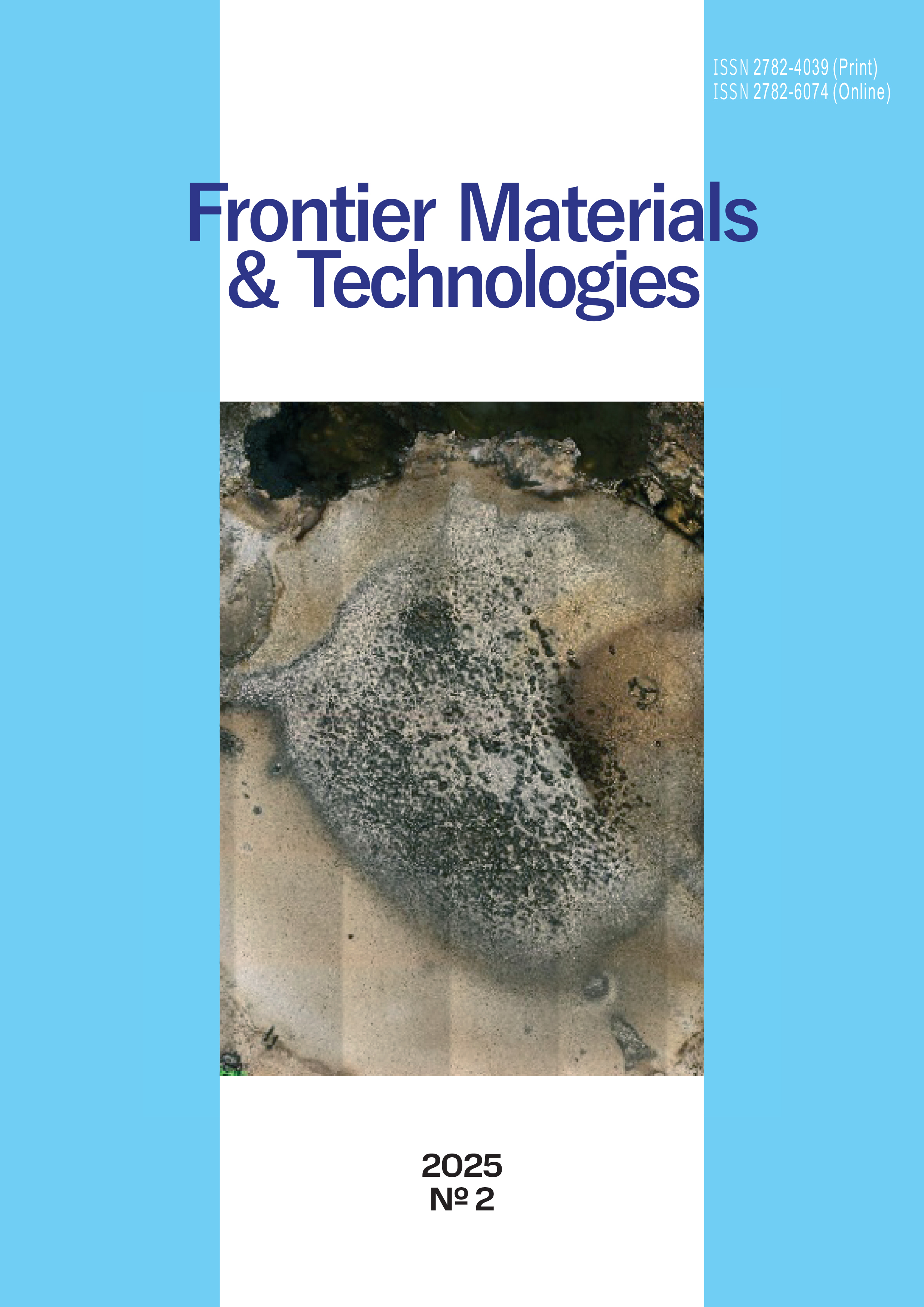The influence of hardening heat treatment modes on the crack propagation resistance of 5H2SMF die steel
- Authors: Shakhnazarov K.Y.1, Rafikov A.R.1
-
Affiliations:
- Empress Catherine II Saint Petersburg Mining University
- Issue: No 2 (2025)
- Pages: 95-101
- Section: Articles
- URL: https://vektornaukitech.ru/jour/article/view/1062
- DOI: https://doi.org/10.18323/2782-4039-2025-2-72-8
- ID: 1062
Cite item
Abstract
In the literature, there are virtually no data on the effect of quenching with holding in the pearlite and bainitic regions and subsequent low and high tempering of different durations on the crack propagation resistance of die steels, and the available data are contradictory. Meanwhile, a “softer” quenching with holding in the intermediate regions reduces significantly the risk of quenching cracks and deformation of dies and die tooling. In this work, samples of 5H2SMF die steel with a sharp notch and artificially induced cracks were subjected to heat treatment, including standard quenching at 910 °C in oil and quenching from 910 °C with steps at 650 °C and 340 °C with different types of tempering (200, 560, 600, and 640 °C) and different durations of time – 1, 3, 5, 7, and 14 h (for 200 °C) in order to increase the crack propagation resistance. The conducted studies allowed identifying that the data on crack propagation resistance after step quenching with holding in the pearlite transformation region and subsequent high tempering at 560, 600 and 640 °C are comparable with standard quenching in oil and high tempering at the same temperatures. The hardness after step quenching in the bainitic transformation region (340 °C) is significantly lower in all cases under different tempering conditions; therefore, it is not possible to compare crack propagation resistance with standard quenching. The optimal holding time (3 and 5 h) from the point of view of increasing crack propagation resistance after standard quenching from 910 °C in oil and low tempering at 200 °C was found.
Keywords
About the authors
Karen Yu. Shakhnazarov
Empress Catherine II Saint Petersburg Mining University
Author for correspondence.
Email: karen812@yandex.ru
ORCID iD: 0000-0001-7501-6590
Doctor of Sciences (Engineering), professor of Chair of Materials Science and Technology of Artistic Products
Россия, 199106, Russia, St. Petersburg, Vasilyevsky Island, 21st Line, 2Artur R. Rafikov
Empress Catherine II Saint Petersburg Mining University
Email: artur.mankevich.99@mail.ru
ORCID iD: 0009-0001-9881-9115
postgraduate student of Chair of Materials Science and Technology of Artistic Products
Россия, 199106, Russia, St. Petersburg, Vasilyevsky Island, 21st Line, 2References
- Chernov D.K. O prigotovlenii stalnykh broneprobivayushchikh snaryadov: soobshchenie D.K. Chernova v Imperatorskom Russkom tekhnologicheskom obshchestve, 10 maya 1885 g. [On the preparation of steel armor-piercing shells]. Sankt-Petersburg, tip. br. Panteleevykh Publ., 1885. 33 p.
- Kostin N.A. Features of hardening of 5KhGS and 5Kh3GS die steels carburized to hypereutectoid concentrations. Chernye metally, 2020, no. 5, pp. 31–36. EDN: YCAHQN.
- Tsukanov D.V., Smirnova D.L., Petkova A.P., Shtertser V.V. Modeling of cooling mode during hardening of a large-sized rotor blank made of Cr-Ni-Mo-V steel. Chernye metally, 2024, no. 9, pp. 29–36. doi: 10.17580/chm.2024.09.05.
- Rakhshtadt A.G. About structural transformations in supercooled austenite of vanadium containing steels. Izvestiya AN SSSR. Metally, 1984, no. 2, pp. 102–107.
- Bazhin V.Yu., Issa B. Influence of heat treatment on the microstructure of steel coils of a heating tube furnace. Journal of Mining Institute, 2021, vol. 249, pp. 393–400. doi: 10.31897/PMI.2021.3.8.
- Pryakhin E.I., Pribytkova D.A. The influence of the quality of surface preparation of pipes for heating networks on their corrosion resistance during operation in underground conditions. Chernye metally, 2023, no. 11, pp. 97–102. doi: 10.17580/chm.2023.11.15.
- Yakubovich E.A. Analysis of the heat treatment modes influence on the life of the tool for hot forming. Zhurnal peredovykh issledovaniy v oblasti estestvoznaniya, 2020, no. 11, pp. 37–42. doi: 10.26160/2572-4347-2020-11-37-42.
- Ermakov B.S., Ermakov S.B., Vologzhanina S.A., Khuznakhmetov R.M. Relationship between operating conditions and the emergence of nano and ultradispersed grain boundary defects in weld joints. Tsvetnye metally, 2023, no. 8, pp. 80–85. doi: 10.17580/tsm.2023.08.13.
- Sivenkov A.V., Konchus D.A., Gareev D.V., Pryakhin E.I. Application of Cr - Ni coatings by chemical-thermal treatment from lowmelting metal solutions. Chernye metally, 2024, no. 12, pp. 101–106. doi: 10.17580/chm.2024.12.14.
- Krylova S.E., Romashkov E.V. Features of heat treatment of a new steel for the manufacture of hot deformation dies. Chernye metally, 2021, no. 1, pp. 54–60. doi: 10.17580/chm.2021.01.08.
- Zambrano O.A. A Review on the Effect of Impact Toughness and Fracture Toughness on Impact-Abrasion Wear. Journal of Materials Engineering and Performance, 2021, vol. 30, pp. 7101–7116. doi: 10.1007/s11665-021-05960-5.
- Shneyderman A.Sh. On the tempering of the bainite structure. Metallovedenie i termicheskaya obrabotka metallov, 1978, no. 12, pp. 12–15.
- Edneral A.F., Rusanenko V.V., Smirnova A.V. Structural transformations during heat treatment of chromium-molybdenum steel. Metallovedenie i termicheskaya obrabotka metallov, 1982, no. 9, pp. 4–8.
- Kramarov M.A., Vinogradov S.I. Effect of tempering mode on static and cyclic crack resistance of steels. Metallovedenie i termicheskaya obrabotka metallov, 1986, no. 3, pp. 14–17.
- Pryakhin E.I., Azarov V.A. Comparative analysis of the use of epoxy and fluoroplastic polymer compositions as internal smooth coatings of the inner cavity of steel main gas pipelines. CIS Iron and Steel Review, 2024, vol. 28, pp. 93–98. doi: 10.17580/cisisr.2024.02.16.
- Petkova A.P., Zlotin V.A. Analysis of the efficiency of reducing hydrogen losses in a pipeline made of various austenitic stainless steels. Chernye metally, 2024, no. 9, pp. 50–54. doi: 10.17580/chm.2024.09.08.
- Xu Wen-hua, Li Yang, Xiao Gui-yong, Gu Guo-chao, Lu Yu-peng. Effects of quenching and partitioning on microstructure and properties of high-silicon and high-aluminum medium carbon alloy steels. Materials Today: Communications, 2023, vol. 34, article number 105031. doi: 10.1016/j.mtcomm.2022.105031.
- Shakhnazarov K.Yu., Kasatonov V.F., Vasilev A.P., Akifev S.K., Kudryavtsev R.S., Panteleev V.I., Astrakhantsev G.N. Shtampovaya stal [Stamping steel], avtorskoe svidetelstvo no. 1671726 A1 SSSR. 2 p. EDN: VVISEL.
- Tishaev S.I., Orlov M.R., Kolesnikov V.A. On the nature of “bainite brittleness” of secondary-hardening steels. Izvestiya AN SSSR, 1984, no. 4, pp. 32–37.
- Kurdyumov G.V., Utevskiy L.M., Entin R.I. Prevrashchenie v zheleze i stali [Transformation in iron and steel]. Moscow, Metallurgiya Publ., 1978. 392 p.
Supplementary files







